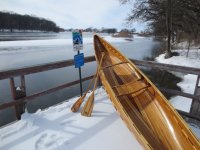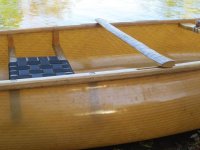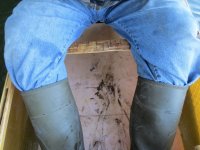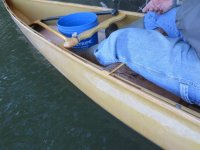I know most of us "Older" paddlers, suffer some discomfort and back pain, while paddling for longer periods of time.
I know I've brought this up before, but want to share again a little trick, my youngest son, Nate discovered.
Years ago, While paddling in the BWCA, Nate said his legs and back where bothering him. He requested I pull over to a Beaver hut. After sorting a few sticks, for the right length to span the gunnel, Nate selected one. It had to be short enough, to miss catching his hand as he stroked. He placed the stick under his legs, on top of the gunnel.
Almost immediately he found relief.
I was in disbelief, and also tried it ! I now have a "Nate Stick" strapped to my inwhale, of my canoe, for when I need it.
Give this a try and see if it helps you !
A few pics.




I know I've brought this up before, but want to share again a little trick, my youngest son, Nate discovered.
Years ago, While paddling in the BWCA, Nate said his legs and back where bothering him. He requested I pull over to a Beaver hut. After sorting a few sticks, for the right length to span the gunnel, Nate selected one. It had to be short enough, to miss catching his hand as he stroked. He placed the stick under his legs, on top of the gunnel.
Almost immediately he found relief.
I was in disbelief, and also tried it ! I now have a "Nate Stick" strapped to my inwhale, of my canoe, for when I need it.
Give this a try and see if it helps you !
A few pics.




Last edited:
